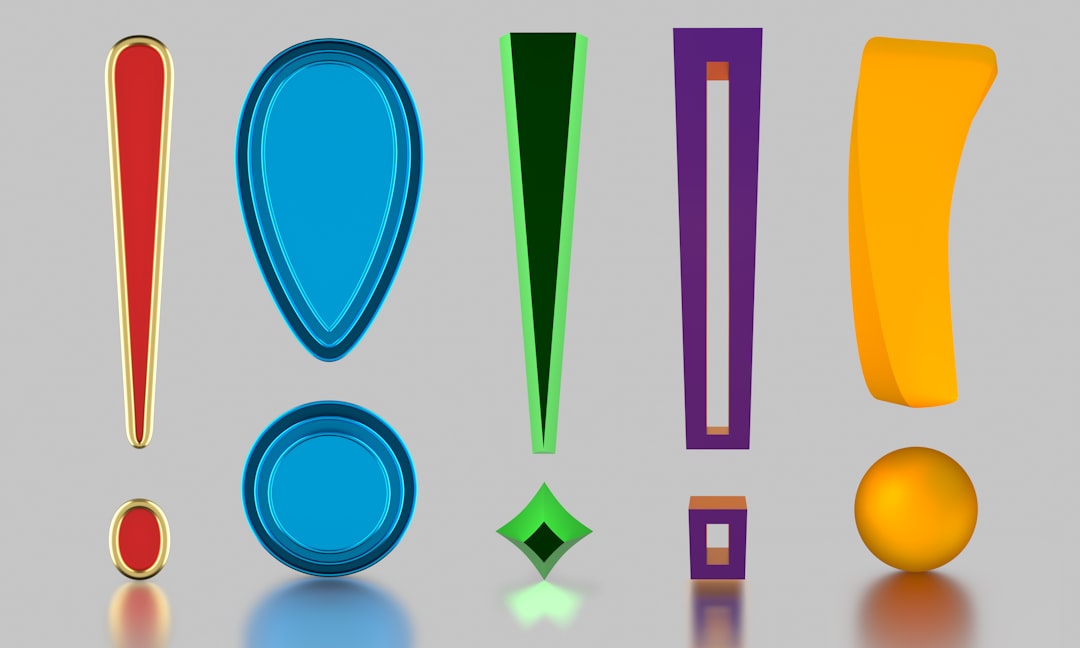Support our educational content for free when you purchase through links on our site. Learn more
🎲 8 Types of Gamification to Transform Your Strategy (2025)
Welcome to the gamified world of 2025, where every click, swipe, and interaction can be turned into a game! 🎮 Imagine a workplace where productivity soars because employees are as engaged as they are when playing their favorite video game. Or a classroom where students are eager to learn because lessons feel like an epic quest. This isn’t science fiction; it’s the power of gamification.
Did you know that 90% of employees say they feel more productive when their work is gamified? That’s not just a number—it’s a testament to the transformative potential of gamification. In this article, we’ll explore 8 types of gamification that can revolutionize your approach, whether you’re in education, marketing, or healthcare. We’ll guide you through each type, helping you choose the right one for your needs. Ready to level up your strategy? Let’s dive in!
Key Takeaways
- 8 Types of Gamification: Discover how each type, from Content to Challenge-Based Gamification, can be tailored to different goals and audiences.
- Boost Engagement and Productivity: Learn how gamification can transform mundane tasks into engaging experiences.
- Invest in the Right Tools: Consider platforms like Kahoot! and Classcraft to kickstart your gamification journey.
- Measure and Iterate: Track your success with key metrics to continuously improve your strategy.
👉 Shop on:
- Kahoot!: Amazon | Kahoot! Official Website
- Classcraft: Classcraft Official Website
Ready to gamify your world? Let’s get started!
Table of Contents
- ⚡️ Quick Tips and Facts
- 🎮 The Evolution of Gamification: From Points to Engagement
- 🔍 Understanding Different Types of Gamification
- 1. Content Gamification: Making Learning Fun
- 2. Performance Gamification: Boosting Productivity
- 3. Social Gamification: Building Communities
- 4. Behavioral Gamification: Encouraging Positive Habits
- 5. Progress Gamification: Tracking Achievements
- 6. Reward-Based Gamification: Incentivizing Success
- 7. Challenge-Based Gamification: Fostering Competition
- 🤔 What Type of Gamification is Best for Your Learners?
- 💡 How to Implement Gamification in Your Strategy
- 📈 Invest in an LMS with Gamification Built-In
- 🎯 Measuring the Success of Gamification
- 🔗 Recommended Tools and Platforms for Gamification
- 🧠 Psychological Insights: Why Gamification Works
- 📚 Conclusion
- 🔗 Recommended Links
- ❓ FAQ
- 🔗 Reference Links
⚡️ Quick Tips and Facts
Welcome to the world of gamification, where work and play collide in the most delightful way! 🎉 Whether you’re a newbie or a seasoned pro, these quick tips will set you on the right path:
- Gamification boosts motivation: According to 360Learning, 72% of employees feel more motivated to work harder when gamification is involved. ✅
- No one-size-fits-all: Tailor your gamification strategy to your audience’s needs and goals. What works for one group might not work for another.
- Content vs. Performance: Decide whether you want to gamify the content itself or the system around it. Both have their unique benefits!
- LMS with Gamification: Invest in a Learning Management System (LMS) that supports gamification features like badges and leaderboards. This can make all the difference in engagement levels.
- Measure Success: Keep track of your gamification efforts to see what’s working and what needs tweaking.
Now, let’s dive deeper into the evolution of gamification and explore the different types that can transform your learning or business environment!
🎮 The Evolution of Gamification: From Points to Engagement
Gamification has come a long way since the days of simple point systems and badges. Today, it’s all about creating engaging experiences that drive real-world outcomes. But how did we get here?
The Early Days
In the beginning, gamification was all about points, badges, and leaderboards (PBL). These elements were easy to implement and provided immediate feedback to users. However, they often lacked depth and failed to sustain long-term engagement.
The Shift to Engagement
As the field evolved, designers began to focus on creating meaningful experiences. This meant incorporating storytelling, challenges, and social interaction into the mix. The goal was to tap into intrinsic motivators like curiosity and mastery, rather than just extrinsic rewards.
The Modern Era
Today, gamification is used in a variety of contexts, from education to healthcare. It’s about personalization and adaptability, ensuring that the experience resonates with each individual user. For example, SuperBetter uses gamification to help users build resilience and achieve personal goals.
Ready to explore the different types of gamification? Let’s go!
🔍 Understanding Different Types of Gamification
Gamification isn’t a one-size-fits-all solution. Different types cater to different needs and objectives. Here’s a breakdown of the most popular types:
1. Content Gamification: Making Learning Fun
Content gamification involves transforming the learning material itself into a game-like experience. This can include storytelling, challenges, and simulations.
- Storytelling: Create a narrative that guides learners through the material.
- Challenges: Incorporate quizzes and puzzles that test understanding.
- Simulations: Use role-playing or scenario-based learning to immerse users.
This approach is perfect for making dry content more engaging. As Program-Ace suggests, content gamification is ideal for drastic upgrades to existing material.
2. Performance Gamification: Boosting Productivity
Performance gamification focuses on the system around the content, adding incentives to maintain high motivation.
- Levels and Points: Track progress and reward achievements.
- Leaderboards: Foster a sense of competition among users.
- Incentives: Offer rewards for reaching specific milestones.
This type taps into the human desire for reward, as highlighted by the Incentive Theory of Motivation.
3. Social Gamification: Building Communities
Social gamification leverages the power of community and collaboration.
- Team Challenges: Encourage users to work together towards a common goal.
- Social Sharing: Allow users to share achievements with their network.
- Community Boards: Create spaces for discussion and support.
This approach is great for fostering a sense of belonging and camaraderie.
4. Behavioral Gamification: Encouraging Positive Habits
Behavioral gamification aims to change user behavior by encouraging positive habits.
- Habit Tracking: Use progress bars and streaks to track habits.
- Reminders: Send nudges to keep users on track.
- Positive Reinforcement: Reward users for maintaining good habits.
This type is often used in health and wellness apps, as seen in Gamification in Healthcare.
5. Progress Gamification: Tracking Achievements
Progress gamification focuses on visualizing progress to keep users motivated.
- Progress Bars: Show users how close they are to their goals.
- Milestones: Celebrate key achievements along the way.
- Feedback: Provide regular updates on progress.
This approach is particularly effective in educational settings, as discussed in Educational Gamification.
6. Reward-Based Gamification: Incentivizing Success
Reward-based gamification uses tangible rewards to motivate users.
- Badges and Trophies: Award users for completing tasks.
- Virtual Currency: Allow users to earn and spend points.
- Prizes: Offer real-world rewards for top performers.
While effective, this approach should be used carefully to avoid over-reliance on extrinsic motivators.
7. Challenge-Based Gamification: Fostering Competition
Challenge-based gamification introduces elements of competition to drive engagement.
- Tournaments: Host competitions with leaderboards and prizes.
- Time-Limited Challenges: Create urgency with deadlines.
- Skill Levels: Allow users to compete at different levels of difficulty.
This type is perfect for users who thrive on competition and enjoy pushing their limits.
🤔 What Type of Gamification is Best for Your Learners?
Choosing the right type of gamification depends on your audience and objectives. Here are some questions to consider:
- What are your goals? Are you looking to increase engagement, improve learning outcomes, or change behavior?
- Who is your audience? Consider their preferences and motivations. Are they competitive, social, or achievement-oriented?
- What resources do you have? Some types of gamification require more time and effort to implement than others.
Remember, there’s no one-size-fits-all solution. It’s all about finding the right fit for your needs.
💡 How to Implement Gamification in Your Strategy
Ready to get started with gamification? Here’s a step-by-step guide:
- Define Your Objectives: Clearly outline what you want to achieve with gamification.
- Understand Your Audience: Conduct surveys or interviews to learn about your users’ preferences and motivations.
- Choose the Right Type: Based on your objectives and audience, select the most suitable type of gamification.
- Design the Experience: Create engaging content and game mechanics that align with your goals.
- Test and Iterate: Launch a pilot program and gather feedback. Use this data to make improvements.
- Measure Success: Track key metrics to evaluate the effectiveness of your gamification strategy.
For more insights, check out our Gamification Case Studies.
📈 Invest in an LMS with Gamification Built-In
If you’re serious about gamification, investing in a Learning Management System (LMS) with built-in gamification features is a smart move. Here’s why:
- Ease of Use: An LMS with gamification capabilities simplifies the process of implementing and managing game elements.
- Scalability: Easily scale your gamification efforts as your organization grows.
- Analytics: Access detailed reports on user engagement and performance.
Some popular LMS platforms with gamification features include 360Learning and Moodle.
👉 CHECK PRICE on:
- 360Learning: 360Learning Official Website
- Moodle: Moodle Official Website
🎯 Measuring the Success of Gamification
Measuring the success of your gamification efforts is crucial for continuous improvement. Here are some key metrics to track:
- Engagement Levels: Monitor user activity and participation rates.
- Learning Outcomes: Assess improvements in knowledge retention and skill development.
- Behavioral Changes: Track changes in user behavior, such as increased productivity or healthier habits.
- User Feedback: Gather qualitative data through surveys and interviews.
By regularly evaluating these metrics, you can make data-driven decisions to enhance your gamification strategy.
🔗 Recommended Tools and Platforms for Gamification
Looking for tools to kickstart your gamification journey? Here are some top recommendations:
- Kahoot!: A popular platform for creating interactive quizzes and games.
- Classcraft: An educational tool that turns the classroom into a role-playing game.
- Bunchball: A gamification platform that offers a variety of game mechanics and analytics.
👉 Shop on:
- Kahoot!: Amazon | Kahoot! Official Website
- Classcraft: Classcraft Official Website
- Bunchball: Bunchball Official Website
🧠 Psychological Insights: Why Gamification Works
Ever wonder why gamification is so effective? It all comes down to psychology. Here’s a peek into the science behind the magic:
- Intrinsic Motivation: Gamification taps into intrinsic motivators like curiosity, mastery, and autonomy, making tasks more enjoyable.
- Dopamine Release: Achieving goals and earning rewards triggers the release of dopamine, a feel-good neurotransmitter that reinforces positive behavior.
- Social Connection: Gamification fosters a sense of community and belonging, which is a powerful motivator for many users.
Understanding these psychological principles can help you design more effective gamification experiences.
For more on the psychology of gamification, explore our Game Mechanics section.
And there you have it! From understanding the different types of gamification to implementing a strategy and measuring success, you’re now equipped with the knowledge to gamify your world. But wait, there’s more! In the next section, we’ll wrap things up with some final thoughts and recommendations. Stay tuned!
📚 Conclusion

As we wrap up this gamified journey, it’s clear that gamification is more than just a buzzword—it’s a powerful tool for engagement, learning, and motivation. Whether you’re looking to enhance educational experiences, boost workplace productivity, or foster healthier habits, there’s a type of gamification that fits the bill.
Positives:
- Engagement: Gamification significantly boosts engagement by making tasks more enjoyable.
- Flexibility: With various types to choose from, you can tailor your approach to suit different needs and audiences.
- Measurable Outcomes: Allows for tracking of progress and success through clear metrics.
Negatives:
- Over-reliance on Extrinsic Rewards: Can lead to diminished intrinsic motivation if not balanced properly.
- Implementation Complexity: Some types of gamification require significant time and resources to implement effectively.
Recommendation: Embrace gamification with an open mind and a clear strategy. Start small, measure success, and iterate based on feedback. Remember, the key is to create meaningful and enjoyable experiences that resonate with your audience.
🔗 Recommended Links
👉 Shop on:
- Kahoot!: Amazon | Kahoot! Official Website
- Classcraft: Classcraft Official Website
- Bunchball: Bunchball Official Website
Books on Amazon:
- The Gamification of Learning and Instruction
- Actionable Gamification: Beyond Points, Badges, and Leaderboards
❓ FAQ

What are the most effective types of gamification in marketing and advertising?
Performance and Social Gamification are highly effective in marketing and advertising. Performance gamification uses leaderboards and points to create competition and drive engagement. Social gamification leverages community and sharing to amplify reach and build brand loyalty. By integrating these types, brands can create campaigns that not only attract attention but also encourage interaction and sharing among users.
How can I use different types of gamification to increase employee engagement and productivity?
To boost employee engagement and productivity, consider Performance and Behavioral Gamification. Performance gamification can introduce leaderboards and rewards for achieving targets, fostering a competitive yet collaborative environment. Behavioral gamification encourages positive workplace habits through habit tracking and reinforcement. By aligning these strategies with company goals, you can create a motivated and productive workforce.
What are the benefits of using gamification in education and which types are most effective for learning?
Gamification in education offers numerous benefits, including increased motivation, improved retention, and enhanced learning experiences. Content and Progress Gamification are particularly effective. Content gamification transforms learning materials into interactive experiences, while progress gamification uses visual progress indicators to motivate students. Together, they create an engaging and supportive learning environment.
Can different types of gamification be used to promote behavioral change and improve overall well-being?
Absolutely! Behavioral and Reward-Based Gamification are ideal for promoting behavioral change and improving well-being. Behavioral gamification encourages the adoption of positive habits through tracking and reminders. Reward-based gamification provides incentives for maintaining these habits, reinforcing positive behavior. This combination can lead to lasting changes in behavior and overall well-being.
🔗 Reference Links
And there you have it! From understanding the evolution of gamification to implementing it effectively, you’re now equipped to gamify your world. Whether you’re in education, marketing, or healthcare, the possibilities are endless. Ready to level up your engagement game? Let’s get started! 🎮




